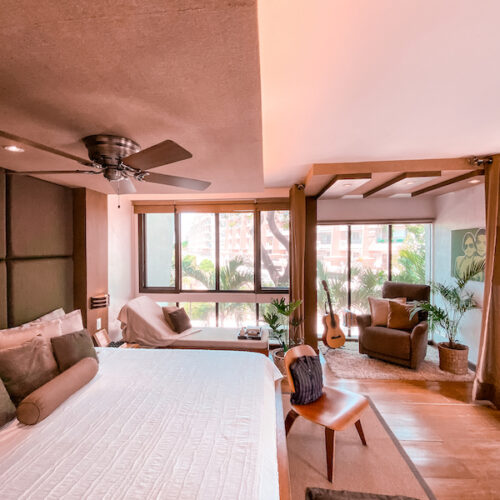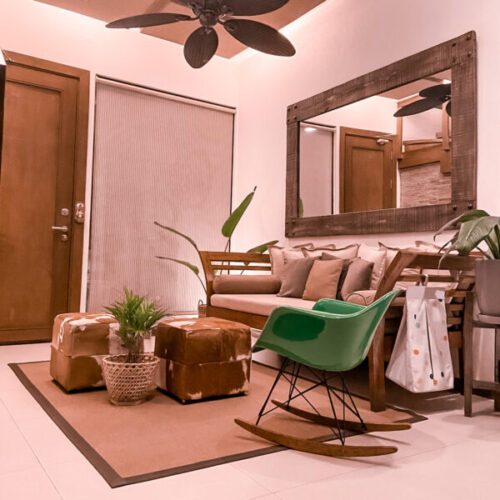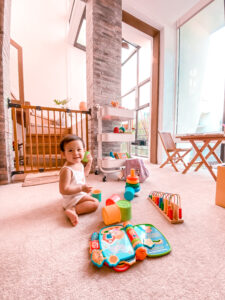by Nina Gomez – Camacho
Let’s talk about the big C, not the one that eats up our physical health, affecting many of our loved ones. I’m talking about the other C that eats up our surroundings, disturbs our mental health and hampers our inner peace – clutter. It takes many forms as it creeps into our lives destroying every function of beauty we struggle to put together.
If healthy skin is the best foundation for makeup, then a clutter-free environment is the best foundation for a beautiful home. No amount of intricate design or expensive materials compares to a neat and well-kept home. That statement comes quite strong for someone who runs an interior design business for a living. In my book, cleanliness over aesthetic design – any day. The power of physical, visual, emotional or mental clutter is so strong that YOU become the clutter you choose to live with.
What is clutter?
It’s the unused clothing still sitting in your closet, all your unread emails and that pile of paper that has visually “disappeared” from your desk because you have gotten so used to seeing it every day. It’s all the unnecessary and excess things that occupy physical or mental space. It piles up, day after day, then it will just hit you as a big, unpleasant surprise.
Who is affected by clutter?
More than a physical structure, our home contains our most-prized possessions: collections, experiences, and loved ones. Homemakers have a huge responsibility to give every member of the household their right to a clutter-free mind, which starts with a clutter-free environment.
Whether you’re a mother running a household, a career woman sharing a flat with friends, or single and still living with your parents – the way you make your home sets the mood and standard for everyone else. More than just a function of beauty or your design solution, it is your job to provide your loved ones with mental soundness through the environment that you build.
When is clutter harmful?
The danger of clutter shows in the personal values you begin to compromise. The threat is bigger than staying in group chats (muted or not) that don’t bring any value to you. It’s bigger than that cupboard filled with Christmas gifts still in their original boxes.
Clutter slowly creeps into your life through bad habits that go unnoticed, which creates a habit of indifference, delaying, and of ignoring things on a daily basis.
Keeping clutter around affects the way you make decisions. Today, it’s allowing a few unread messages to hang around in your inbox, tomorrow, it’s mindlessly gaining weight until you no longer recognize the woman you see in the mirror. The habits you build and apply to the little things, are the same habits that define the core of your existence.
Where can I start decluttering? And why is it so powerful?
Since clutter starts with a series of small, unfavorable decisions we make every day, we can undo it by making a series of small, good decisions every day.
Know that as I write this article, I have 23,776 unsorted photos in my phone ~slowly faints~, to date. That is my clutter… among others.
I may be clutter-free in many other areas but I’ve also made my share of small, careless decisions that led to cluttered parts of my life and there’s no shame in admitting that. We all have them. And the only way to start decluttering is to identify where your clutter has piled up, accept it and act on it. Clutter may be forceful but decluttering is a more powerful act of the will and mind.
How do I keep a clutter-free life?
Begin with the physical.
A clutter-free mind starts with clean physical architecture. You don’t have to be the next Marie Kondo. You just need to start putting away things that take up unnecessary space.
Use colors and textures that can contribute harmony to your space. Having a sense of fluidity around you is the key to a better mood, visual clarity and a more relaxed state.
Start small.
The most intimidating part of decluttering is starting. You don’t have to declutter the whole house today. As in management principles, break up the big tasks into smaller, doable ones. Start with one drawer or the receipts in your wallet. It doesn’t matter how small you start, as long as you do.
Decide on it, every day.
My house does not look like this twenty-four hours a day (heck, I have four kids – which explains that essential diaper hanger in the living room!). But it looks like this every night before we go to bed. No matter what happens during the day, my husband, my children and I make a conscious decision to put things back in their proper places, every. single. night.
Pro tip for parents: Never underestimate the intelligence and willfulness of children, they can help.
As challenging as it sounds, it has been doable because of the discipline I acquired from my mother, who always had the exceptional trait of orderliness. Before William McRaven’s speech went viral or his New York Times Bestseller, my mom had already taught me the discipline of making my bed everyday. But with all due credit to the respectable man, he and my mom believed in the power of everyday decisions.
One time I left my bed undone, and my mom asked me to go home from the office, just so I can fix it myself. That is a lesson carved in me forever. It taught me that doing things right is a decision you make every day.
Create long-term habits.
As you accomplish the little things, create long-term habits. Make systems that work for you and your family.
As early as four years old, I would teach my children about what we call a “Share Box.” It is a huge box that we bring out every quarter and decide, together, which of their clothes, and toys they’d like to lovingly share.
The optimal word is “share,” not “give up.” At a tender age, giving them the power to decide, let go and understand how others can benefit from their moving forward, will allow them to grow up with a natural inclination to lead a clutter-free life – wanting and keeping only what they truly need.
And again, highlighting one of my mother’s life lessons, if there is something in your closet that you haven’t intentionally chosen to wear or used in a month or two, the chances of you wearing or using it again, decreases as each day passes. So, let it go.
Move on to the intangible.
Once you’ve done your physical decluttering, move up to the intangible – negative opinions, irrelevant thoughts, senseless worries & emotional baggage. All these hinder us from finding the function of beauty in our emotional and mental state.
Last week, my 5-year old son asked me, “Mom, can you help me meditate? I want to meditate because I can’t sleep.”
I was quite amused to hear that from a little boy, and happy to know I must have taught him something right early on. With all the media and gadgets they are exposed to, guided meditations for kids help him calm his physical energy and soothe the mental distractions, including noise and clutter.
Intangible decluttering is more difficult but it is also a chance to get creative in letting go of the unnecessary. You can write them down, practice quiet meditation, compose a personal mantra and the most important of all is to say a sincere, silent prayer to let go and to empty ourselves so we may be filled with grace, instead.
Be brave enough to keep trying.
As long as we live, our to-do lists will never end. There will always be a window of opportunity for clutter to creep in. But the next time clutter knocks on your door and starts taking up space in your life again, look clutter straight in the eye and do something about it.
Thank you Mom, for all that you have taught me. This is for you, in the month that we celebrate YOU.

Want to share your thoughts? Get in touch with us.










